Abstract
1. The experiments reported here have examined some temporal characteristics of the inspiration-related sympathetic discharge of the cat in control conditions and during forcing of the respiratory oscillator into marked deviations from its natural frequency. The purpose of these experiments was to establish whether or not the relation of sympathetic to phrenic nerve activity shows properties consistent with the hypothesis that the inspiration-related sympathetic discharge is driven by a neural oscillator, independent of, but coupled and stably entrained to, the brain-stem respiratory oscillator. 2. The electrical activity of the whole cervical sympathetic trunk (n = 26) or of small strands of the cervical trunk containing single units (n = 20) and of the phrenic nerve was recorded in pentobarbitone-anaesthetized, paralysed, artificially ventilated, sino-aortic denervated cats. Most of the cats were bilaterally vagotomized. 3. The onset of the inspiratory burst of the sympathetic preganglionic neurones had a fixed delay from the onset of the phrenic nerve burst. The level of activity within the burst, in whole cervical trunk recording, reached a maximum in early inspiration and then was maintained at approximately this level for the rest of inspiration (twenty-two out of twenty-six cats). In four cats the activity level increased throughout the burst. Individual sympathetic preganglionic neurones displaying inspiration-related burst firing were characteristically recruited in early inspiration and thereafter maintained an approximately constant firing frequency for the rest of inspiration. 4. Electrical stimulation of afferents in the superior laryngeal nerve during various phases of the respiratory cycle caused equivalent, phase-dependent, resetting patterns of both phrenic nerve and inspiration-related sympathetic discharge. 5. In cats with intact vagus nerves, entrainment of the brain-stem respiratory oscillator to the frequency of the respiratory pump was used to change the frequency of the former, within limits, by changing the frequency of the latter. Over the range of frequencies tested, the pump-to-phrenic delay varied as a function of frequency, while the delay between phrenic and sympathetic burst onset was essentially independent of frequency. 6. In hyperthermic, hypocapnic cats phrenic nerve burst frequency increased up to about 300 bursts/min from a value of 15 bursts/min in normothermia-normocapnia. At all frequencies within this range the sympathetic burst maintained a delay, with respect to the phrenic burst, which was essentially independent of frequency.(ABSTRACT TRUNCATED AT 400 WORDS)
Full text
PDF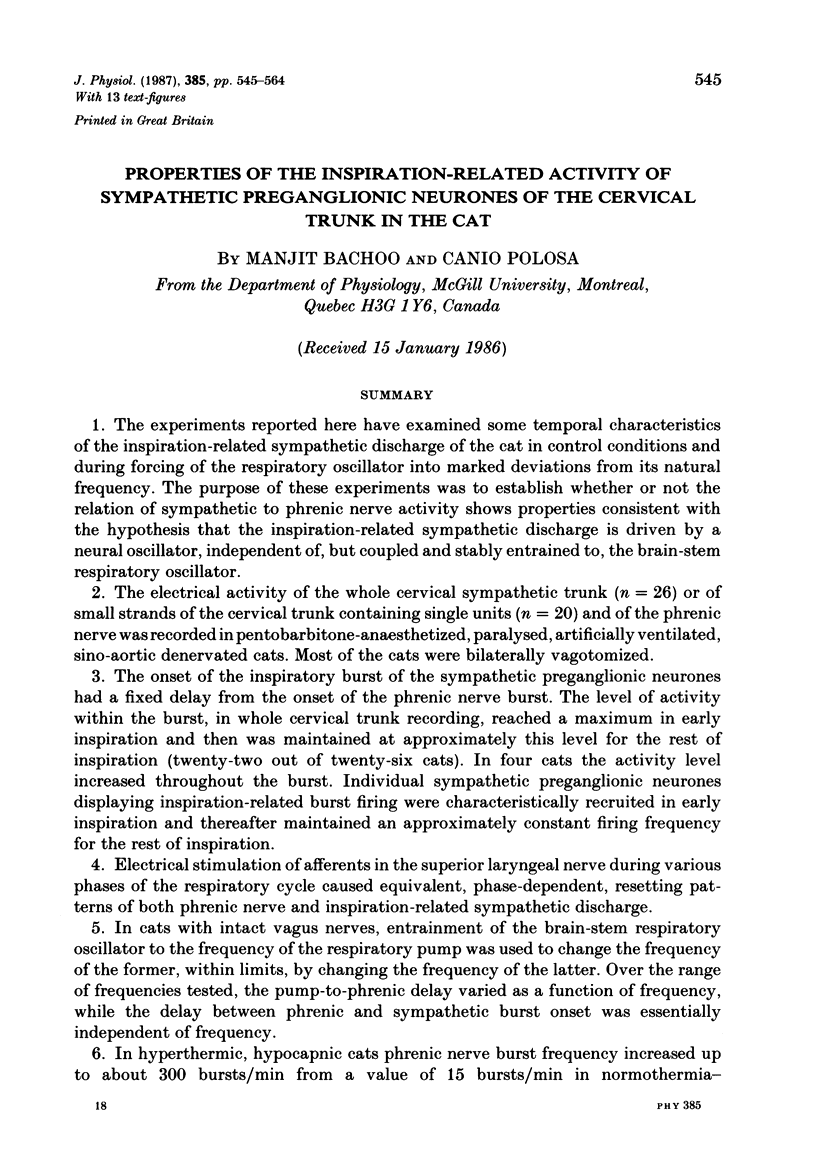
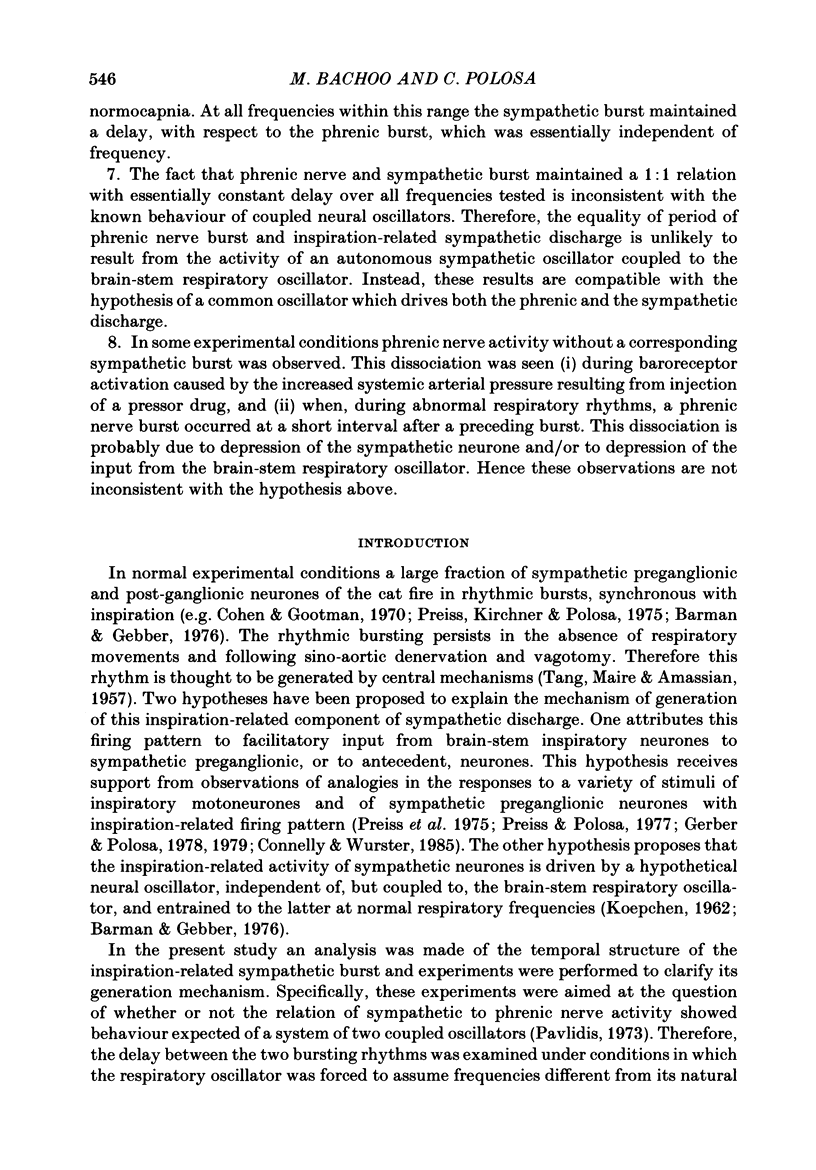
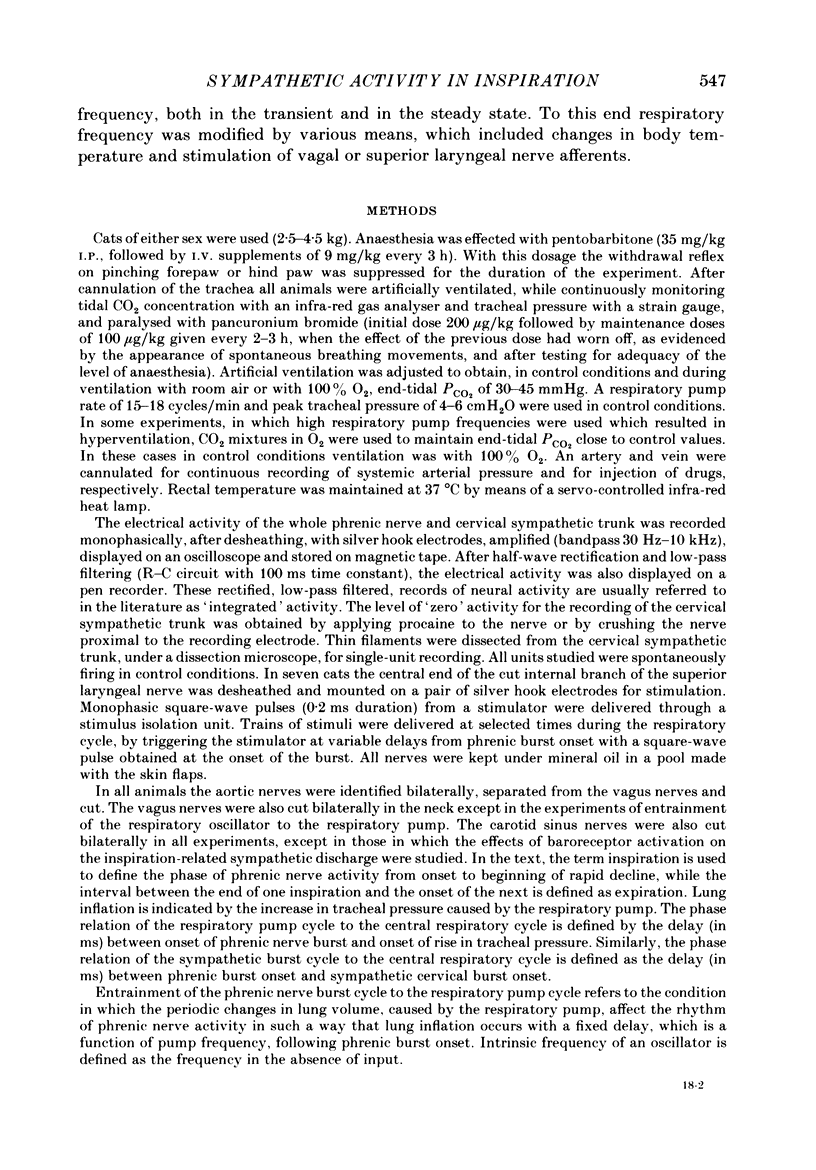
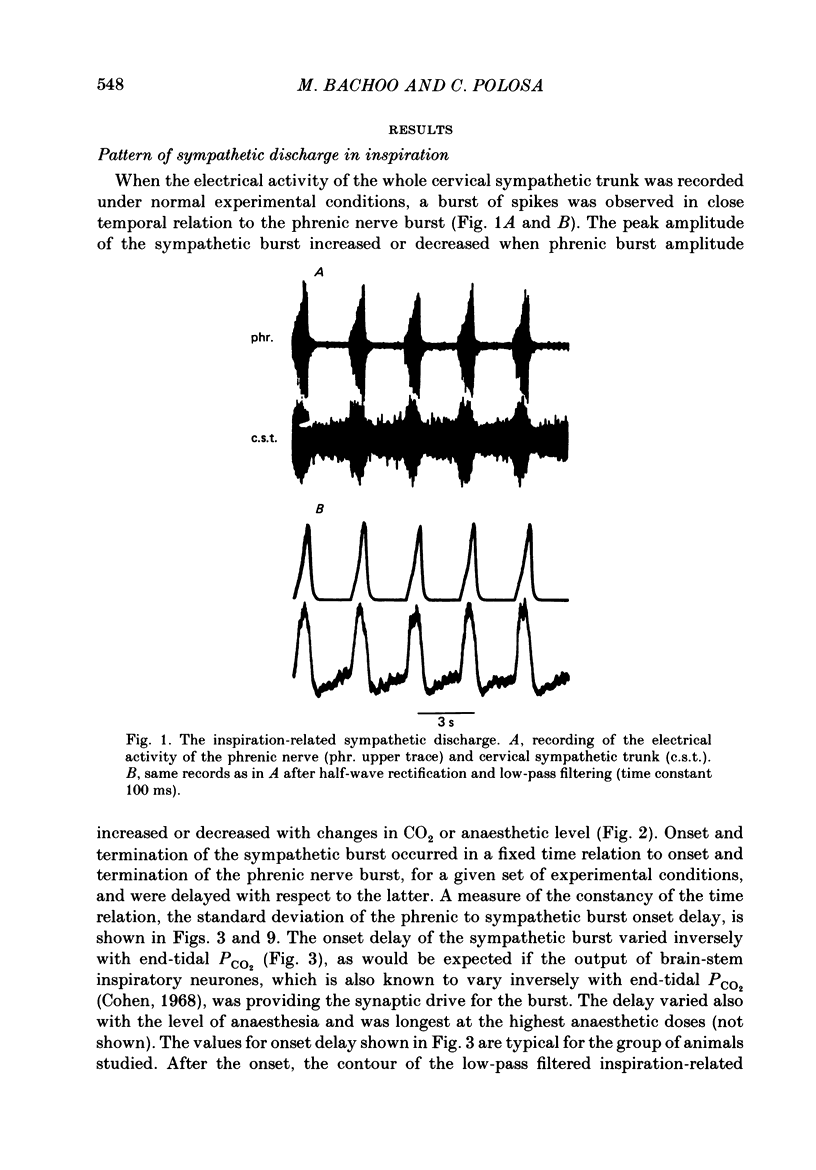
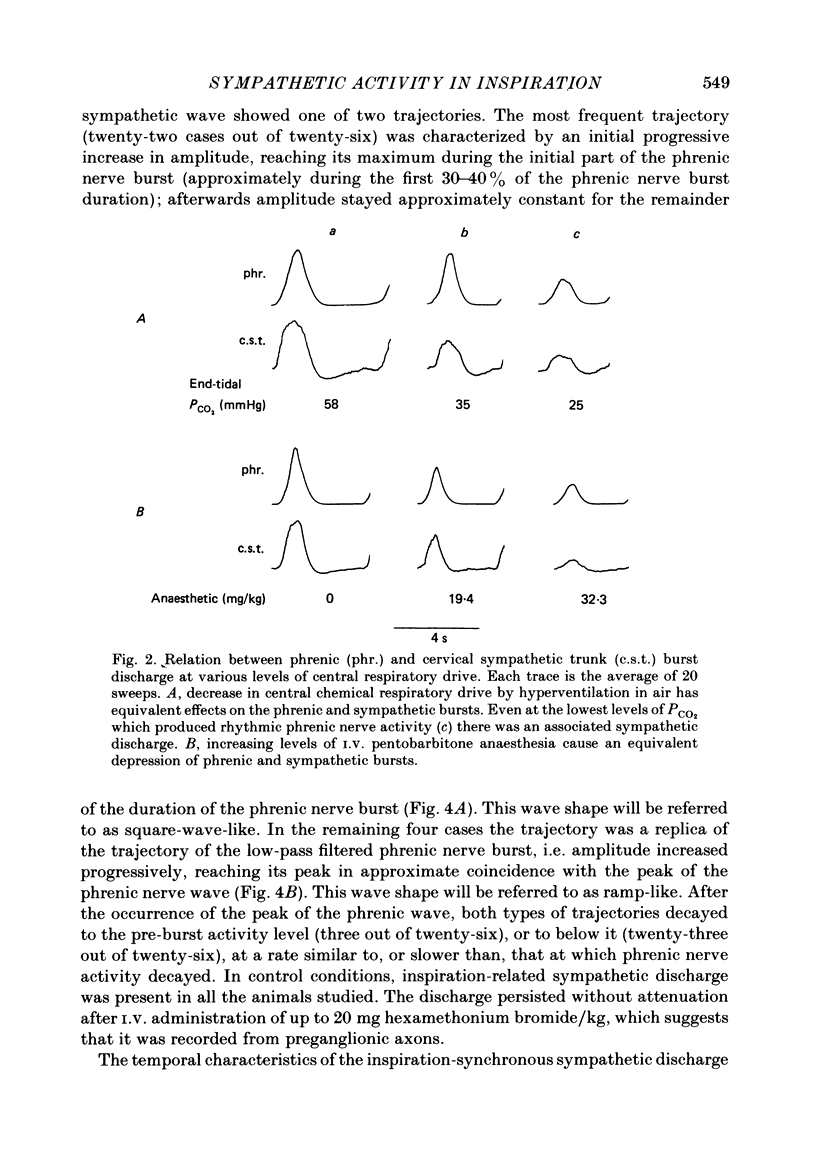
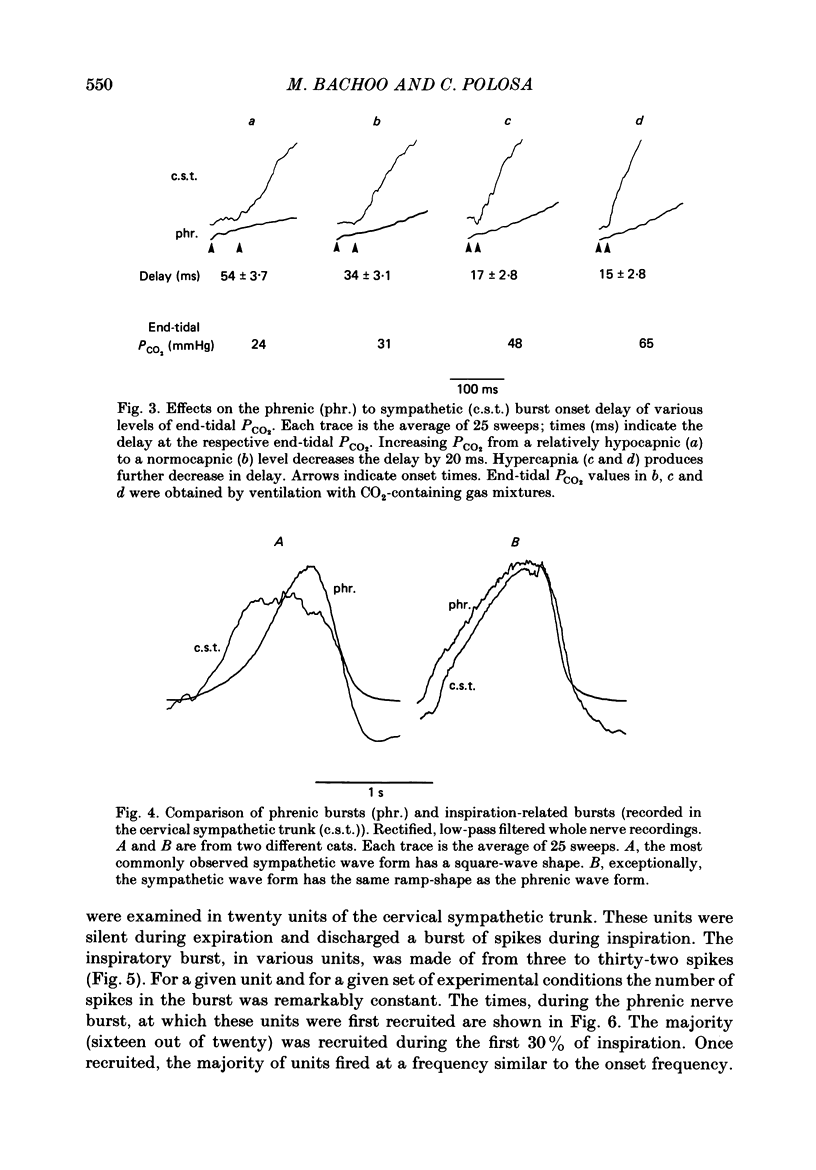
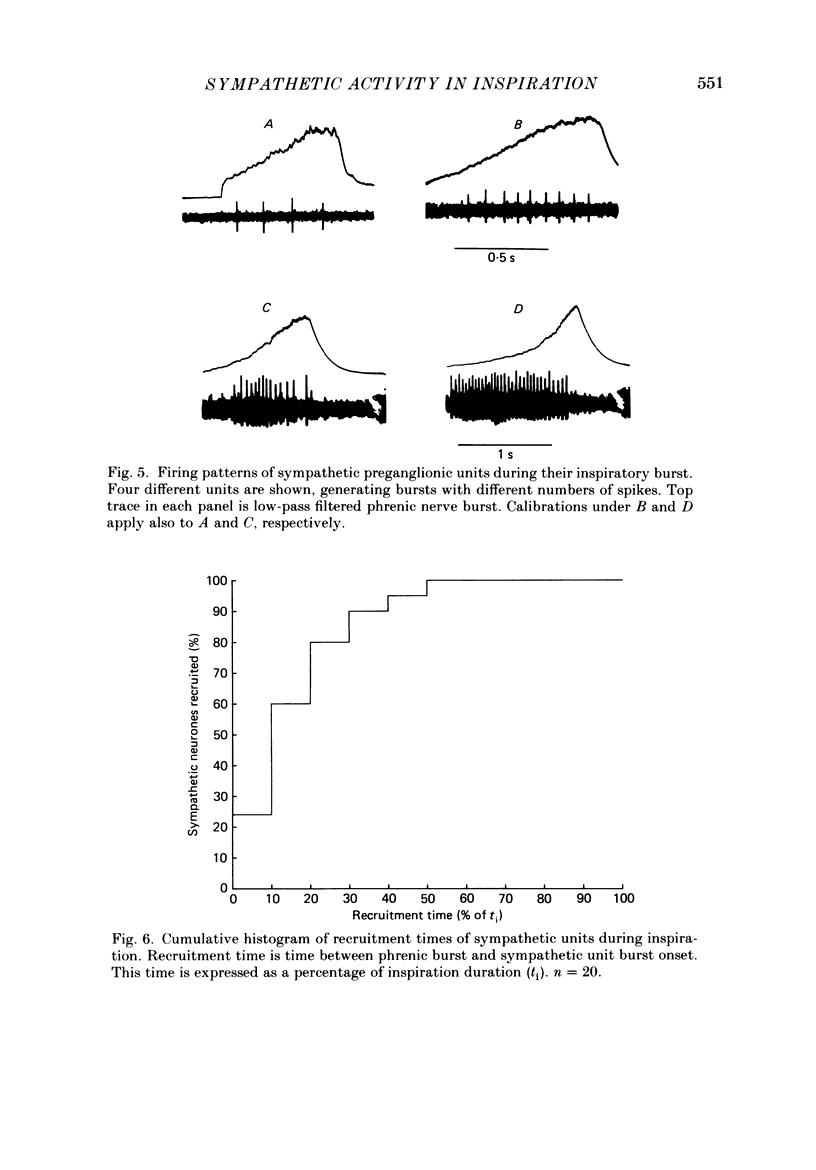


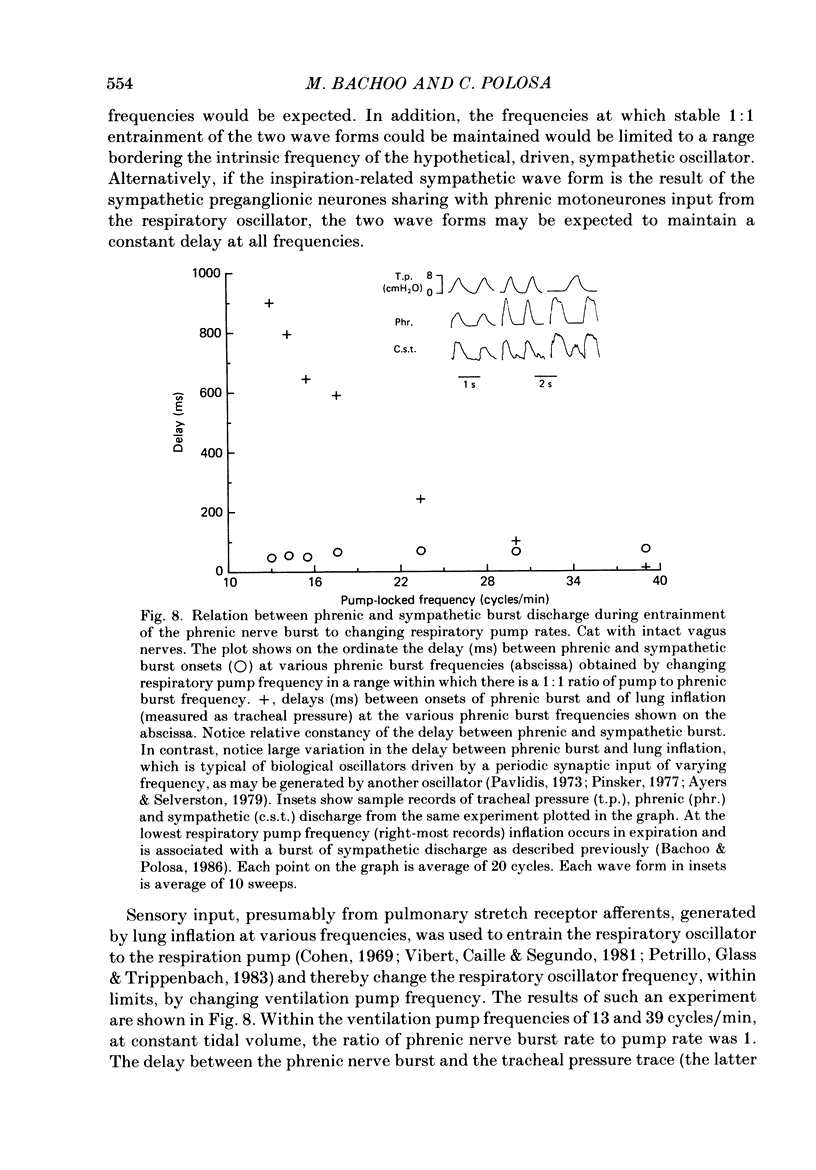
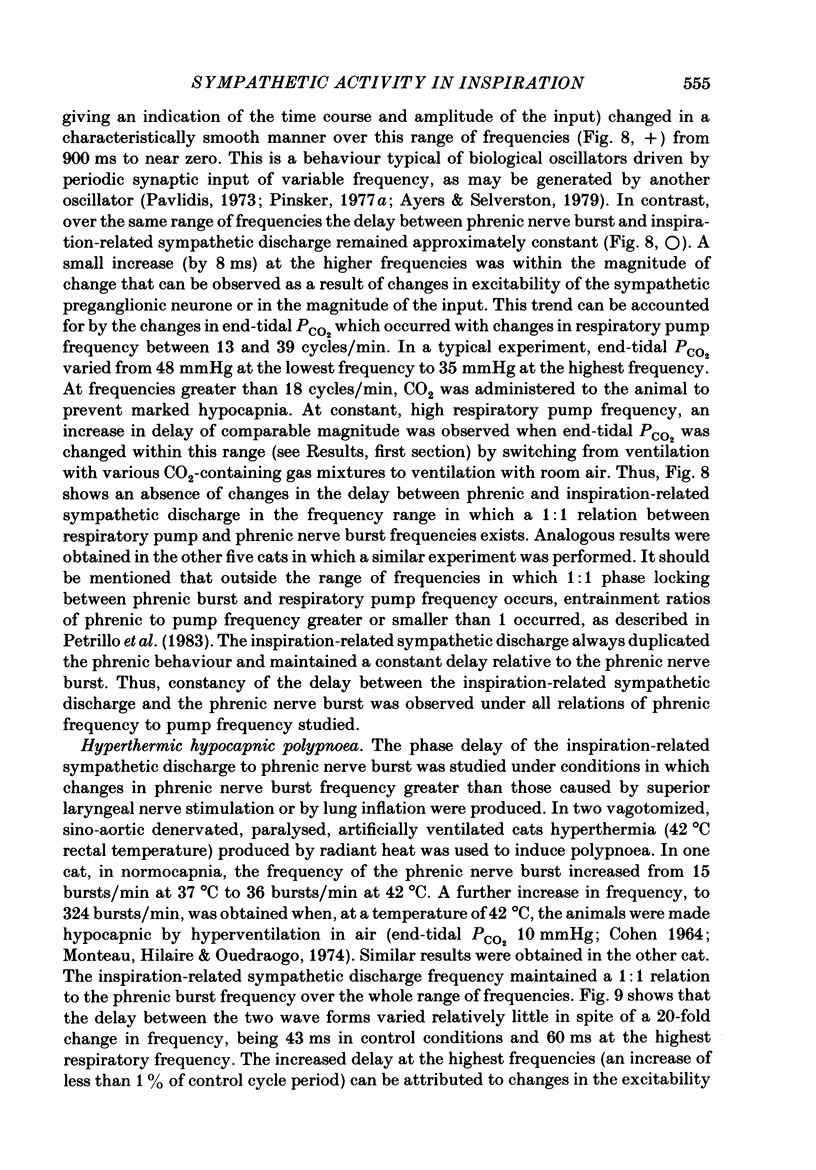

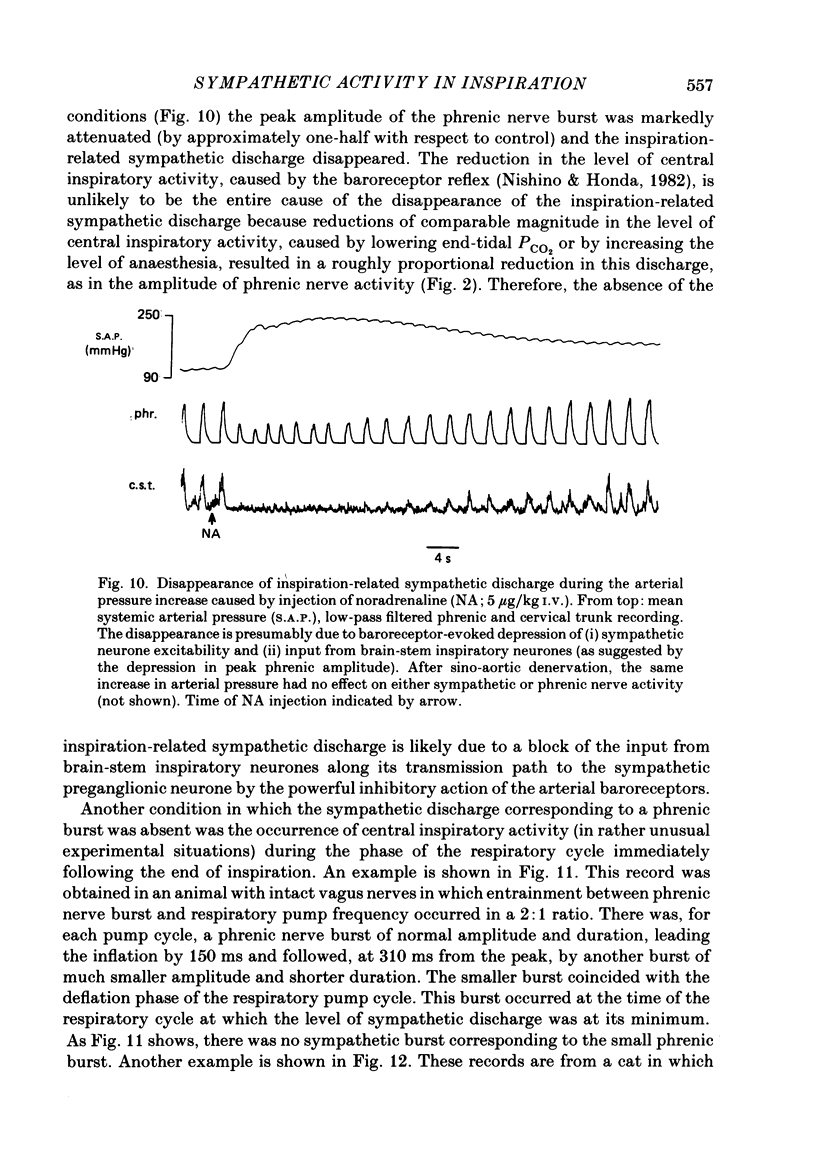
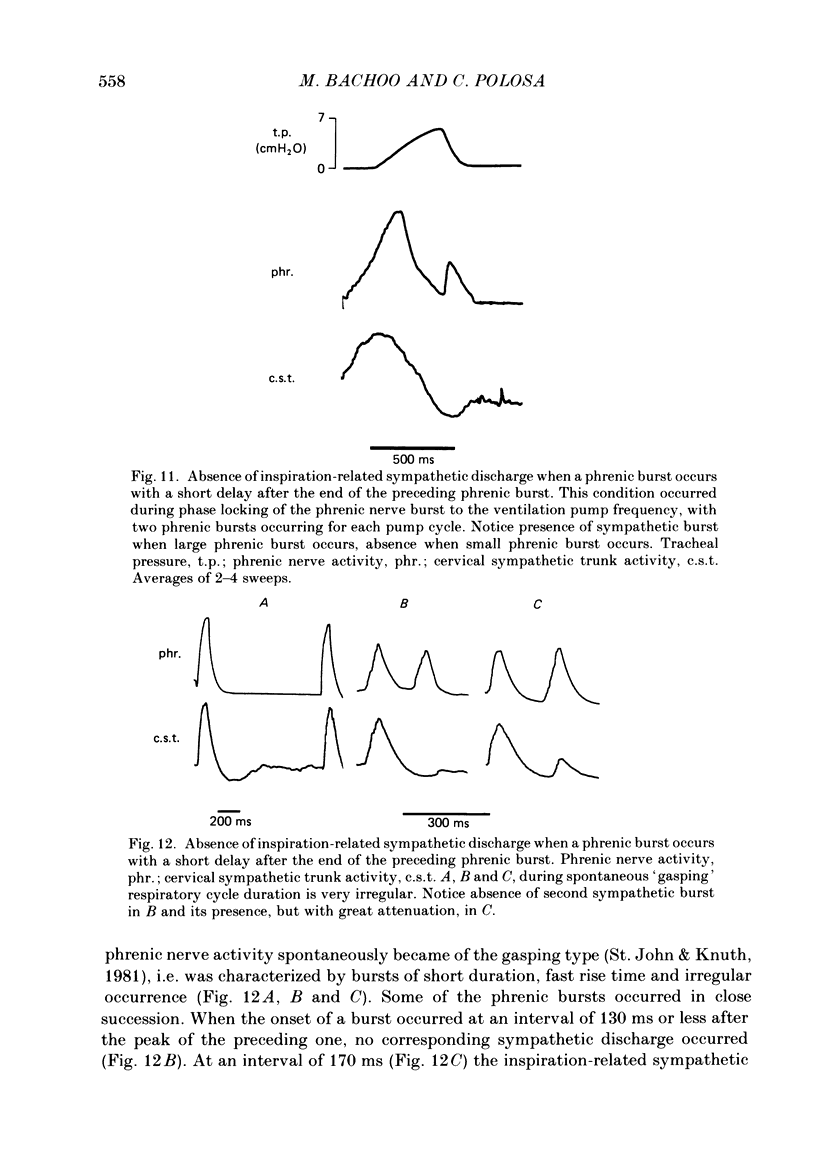

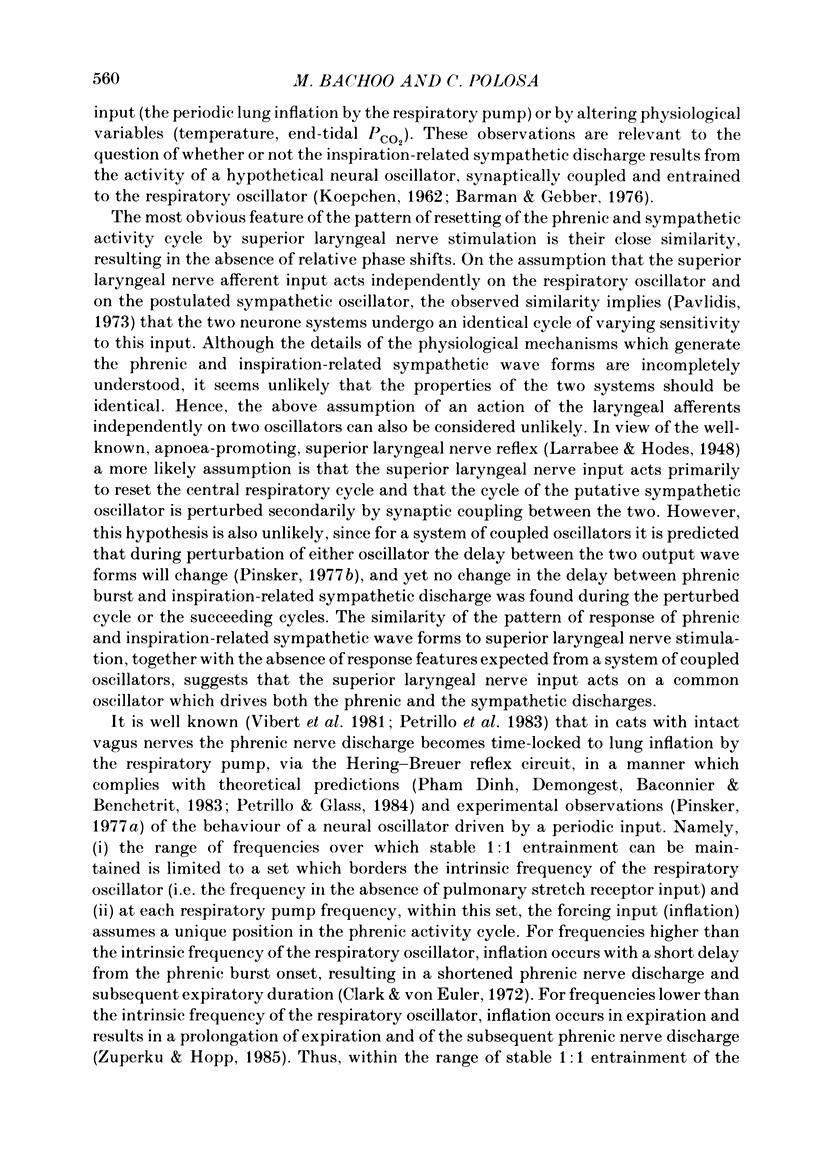

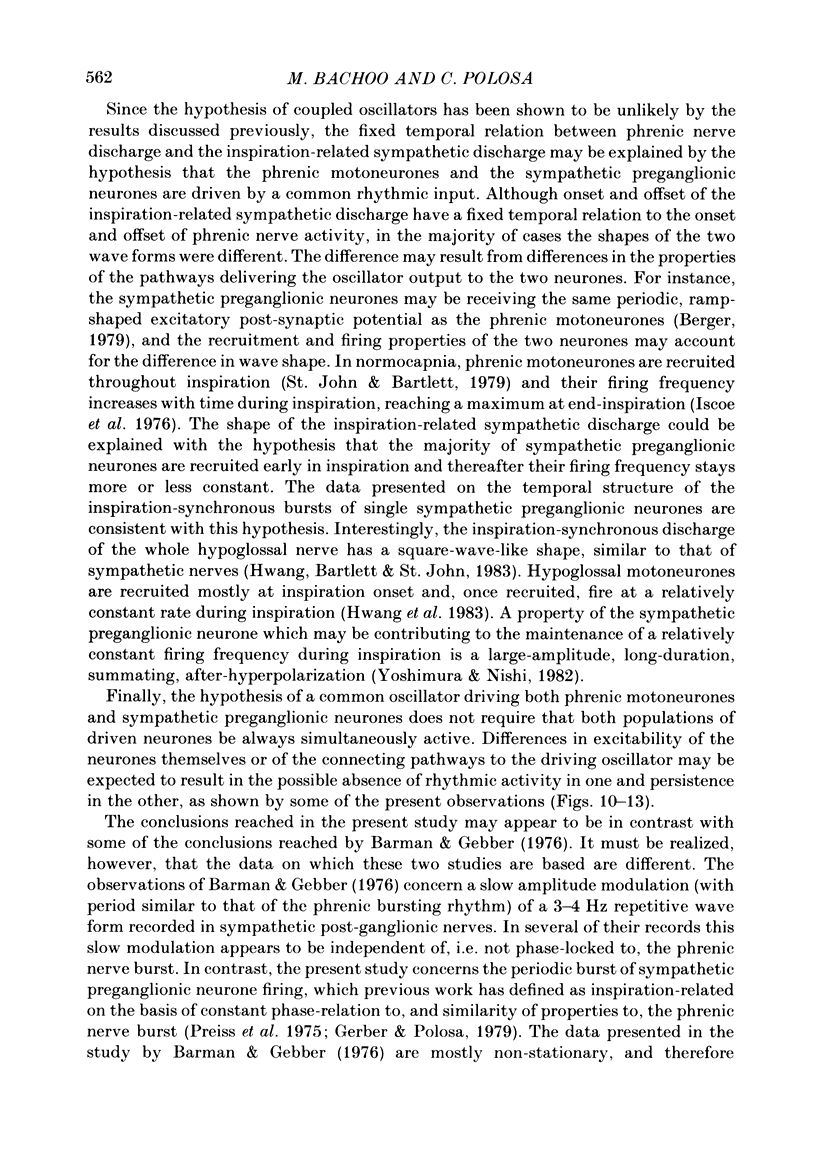
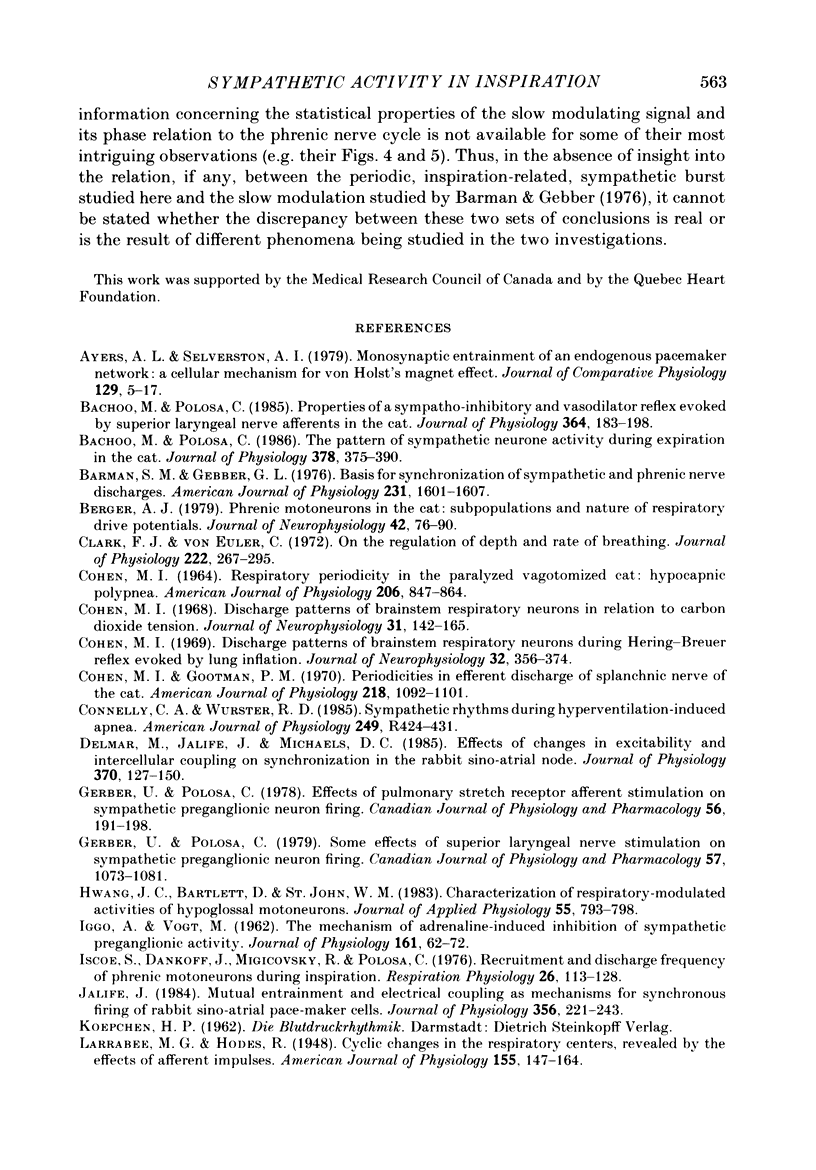
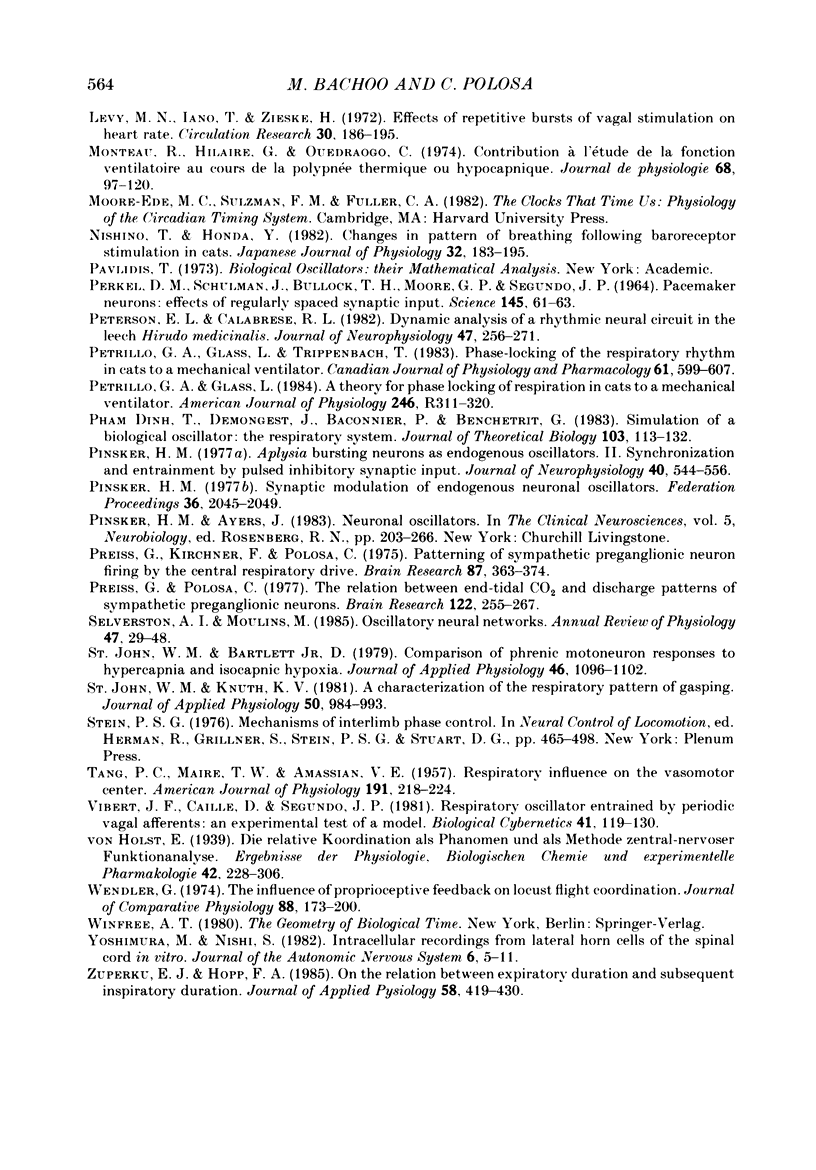
Selected References
These references are in PubMed. This may not be the complete list of references from this article.
- Bachoo M., Polosa C. Properties of a sympatho-inhibitory and vasodilator reflex evoked by superior laryngeal nerve afferents in the cat. J Physiol. 1985 Jul;364:183–198. doi: 10.1113/jphysiol.1985.sp015738. [DOI] [PMC free article] [PubMed] [Google Scholar]
- Bachoo M., Polosa C. The pattern of sympathetic neurone activity during expiration in the cat. J Physiol. 1986 Sep;378:375–390. doi: 10.1113/jphysiol.1986.sp016225. [DOI] [PMC free article] [PubMed] [Google Scholar]
- Barman S. M., Gebber G. L. Basis for synchronization of sympathetic and phrenic nerve discharges. Am J Physiol. 1976 Nov;231(5 Pt 1):1601–1607. doi: 10.1152/ajplegacy.1976.231.5.1601. [DOI] [PubMed] [Google Scholar]
- Berger A. J. Phrenic motoneurons in the cat: subpopulations and nature of respiratory drive potentials. J Neurophysiol. 1979 Jan;42(1 Pt 1):76–90. doi: 10.1152/jn.1979.42.1.76. [DOI] [PubMed] [Google Scholar]
- Clark F. J., von Euler C. On the regulation of depth and rate of breathing. J Physiol. 1972 Apr;222(2):267–295. doi: 10.1113/jphysiol.1972.sp009797. [DOI] [PMC free article] [PubMed] [Google Scholar]
- Cohen M. I. Discharge patterns of brain-stem respiratory neurons during Hering-Breuer reflex evoked by lung inflation. J Neurophysiol. 1969 May;32(3):356–374. doi: 10.1152/jn.1969.32.3.356. [DOI] [PubMed] [Google Scholar]
- Cohen M. I. Discharge patterns of brain-stem respiratory neurons in relation to carbon dioxide tension. J Neurophysiol. 1968 Mar;31(2):142–165. doi: 10.1152/jn.1968.31.2.142. [DOI] [PubMed] [Google Scholar]
- Cohen M. I., Gootman P. M. Periodicities in efferent discharge of splanchnic nerve of the cat. Am J Physiol. 1970 Apr;218(4):1092–1101. doi: 10.1152/ajplegacy.1970.218.4.1092. [DOI] [PubMed] [Google Scholar]
- Connelly C. A., Wurster R. D. Sympathetic rhythms during hyperventilation-induced apnea. Am J Physiol. 1985 Oct;249(4 Pt 2):R424–R431. doi: 10.1152/ajpregu.1985.249.4.R424. [DOI] [PubMed] [Google Scholar]
- Delmar M., Jalife J., Michaels D. C. Effects of changes in excitability and intercellular coupling on synchronization in the rabbit sino-atrial node. J Physiol. 1986 Jan;370:127–150. doi: 10.1113/jphysiol.1986.sp015926. [DOI] [PMC free article] [PubMed] [Google Scholar]
- Gerber U., Polosa C. Effects of pulmonary stretch receptor afferent stimulation on sympathetic preganglionic neuron firing. Can J Physiol Pharmacol. 1978 Apr;56(2):191–198. doi: 10.1139/y78-027. [DOI] [PubMed] [Google Scholar]
- Gerber U., Polosa C. Some effects of superior laryngeal nerve stimulation on sympathetic preganglionic neuron firing. Can J Physiol Pharmacol. 1979 Oct;57(10):1073–1081. doi: 10.1139/y79-161. [DOI] [PubMed] [Google Scholar]
- Hwang J. C., Bartlett D., Jr, St John W. M. Characterization of respiratory-modulated activities of hypoglossal motoneurons. J Appl Physiol Respir Environ Exerc Physiol. 1983 Sep;55(3):793–798. doi: 10.1152/jappl.1983.55.3.793. [DOI] [PubMed] [Google Scholar]
- Iggo A., Vogt M. The mechanism of adrenaline-induced inhibition of sympathetic preganglionic activity. J Physiol. 1962 Apr;161(1):62–72. doi: 10.1113/jphysiol.1962.sp006873. [DOI] [PMC free article] [PubMed] [Google Scholar]
- Iscoe S., Dankoff J., Migicovsky R., Polosa C. Recruitment and discharge frequency of phrenic motoneurones during inspiration. Respir Physiol. 1976 Feb;26(1):113–128. doi: 10.1016/0034-5687(76)90056-6. [DOI] [PubMed] [Google Scholar]
- Jalife J. Mutual entrainment and electrical coupling as mechanisms for synchronous firing of rabbit sino-atrial pace-maker cells. J Physiol. 1984 Nov;356:221–243. doi: 10.1113/jphysiol.1984.sp015461. [DOI] [PMC free article] [PubMed] [Google Scholar]
- Levy M. N., Iano T., Zieske H. Effects of repetitive bursts of vagal activity on heart rate. Circ Res. 1972 Feb;30(2):186–195. doi: 10.1161/01.res.30.2.186. [DOI] [PubMed] [Google Scholar]
- Monteau R., Hilaire G., Ouedraogo C. Contribution à l'étude de la fonction ventilatoire au cours de la polypnée thermique ou hypocapnique. J Physiol (Paris) 1974 Mar;68(1):97–120. [PubMed] [Google Scholar]
- Nishino T., Honda Y. Changes in pattern of breathing following baroreceptor stimulation in cats. Jpn J Physiol. 1982;32(2):183–195. doi: 10.2170/jjphysiol.32.183. [DOI] [PubMed] [Google Scholar]
- PERKEL D. H., SCHULMAN J. H., BULLOCK T. H., MOORE G. P., SEGUNDO J. P. PACEMAKER NEURONS: EFFECTS OF REGULARLY SPACED SYNAPTIC INPUT. Science. 1964 Jul 3;145(3627):61–63. doi: 10.1126/science.145.3627.61. [DOI] [PubMed] [Google Scholar]
- Peterson E. L., Calabrese R. L. Dynamic analysis of a rhythmic neural circuit in the leech Hirudo medicinalis. J Neurophysiol. 1982 Feb;47(2):256–271. doi: 10.1152/jn.1982.47.2.256. [DOI] [PubMed] [Google Scholar]
- Petrillo G. A., Glass L. A theory for phase locking of respiration in cats to a mechanical ventilator. Am J Physiol. 1984 Mar;246(3 Pt 2):R311–R320. doi: 10.1152/ajpregu.1984.246.3.R311. [DOI] [PubMed] [Google Scholar]
- Petrillo G. A., Glass L., Trippenbach T. Phase locking of the respiratory rhythm in cats to a mechanical ventilator. Can J Physiol Pharmacol. 1983 Jun;61(6):599–607. doi: 10.1139/y83-092. [DOI] [PubMed] [Google Scholar]
- Pham Dinh T., Demongeot J., Baconnier P., Benchetrit G. Simulation of a biological oscillator: the respiratory system. J Theor Biol. 1983 Jul 7;103(1):113–132. doi: 10.1016/0022-5193(83)90202-3. [DOI] [PubMed] [Google Scholar]
- Pinsker H. M. Aplysia bursting neurons as endogenous oscillators. II. Synchronization and entrainment by pulsed inhibitory synaptic input. J Neurophysiol. 1977 May;40(3):544–556. doi: 10.1152/jn.1977.40.3.544. [DOI] [PubMed] [Google Scholar]
- Pinsker H. M. Synaptic modulation of endogenous neuronal oscillators. Fed Proc. 1977 Jun;36(7):2045–2049. [PubMed] [Google Scholar]
- Preiss G., Kirchner F., Polosa C. Patterning of sympathetic preganglionic neuron firing by the central respiratory drive. Brain Res. 1975 Apr 11;87(2-3):363–374. doi: 10.1016/0006-8993(75)90434-5. [DOI] [PubMed] [Google Scholar]
- Preiss G., Polosa C. The relation between end-tidal CO2 and discharge patterns of sympathetic preganglionic neurons. Brain Res. 1977 Feb 18;122(2):255–267. doi: 10.1016/0006-8993(77)90293-1. [DOI] [PubMed] [Google Scholar]
- Selverston A. I., Moulins M. Oscillatory neural networks. Annu Rev Physiol. 1985;47:29–48. doi: 10.1146/annurev.ph.47.030185.000333. [DOI] [PubMed] [Google Scholar]
- St John W. M., Bartlett D., Jr Comparison of phrenic motoneuron responses to hypercapnia and isocapnic hypoxia. J Appl Physiol Respir Environ Exerc Physiol. 1979 Jun;46(6):1096–1102. doi: 10.1152/jappl.1979.46.6.1096. [DOI] [PubMed] [Google Scholar]
- St John W. M., Knuth K. V. A characterization of the respiratory pattern of gasping. J Appl Physiol Respir Environ Exerc Physiol. 1981 May;50(5):984–993. doi: 10.1152/jappl.1981.50.5.984. [DOI] [PubMed] [Google Scholar]
- TANG P. C., MAIRE F. W., AMASSIAN V. E. Respiratory influence on the vasomotor center. Am J Physiol. 1957 Nov;191(2):218–224. doi: 10.1152/ajplegacy.1957.191.2.218. [DOI] [PubMed] [Google Scholar]
- Vibert J. F., Caille D., Segundo J. P. Respiratory oscillator entrainment by periodic vagal afferentes: an experimental test of a model. Biol Cybern. 1981;41(2):119–130. doi: 10.1007/BF00335366. [DOI] [PubMed] [Google Scholar]
- Yoshimura M., Nishi S. Intracellular recordings from lateral horn cells fo the spinal cord in vitro. J Auton Nerv Syst. 1982 Jul;6(1):5–11. doi: 10.1016/0165-1838(82)90017-0. [DOI] [PubMed] [Google Scholar]
- Zuperku E. J., Hopp F. A. On the relation between expiratory duration and subsequent inspiratory duration. J Appl Physiol (1985) 1985 Feb;58(2):419–430. doi: 10.1152/jappl.1985.58.2.419. [DOI] [PubMed] [Google Scholar]


